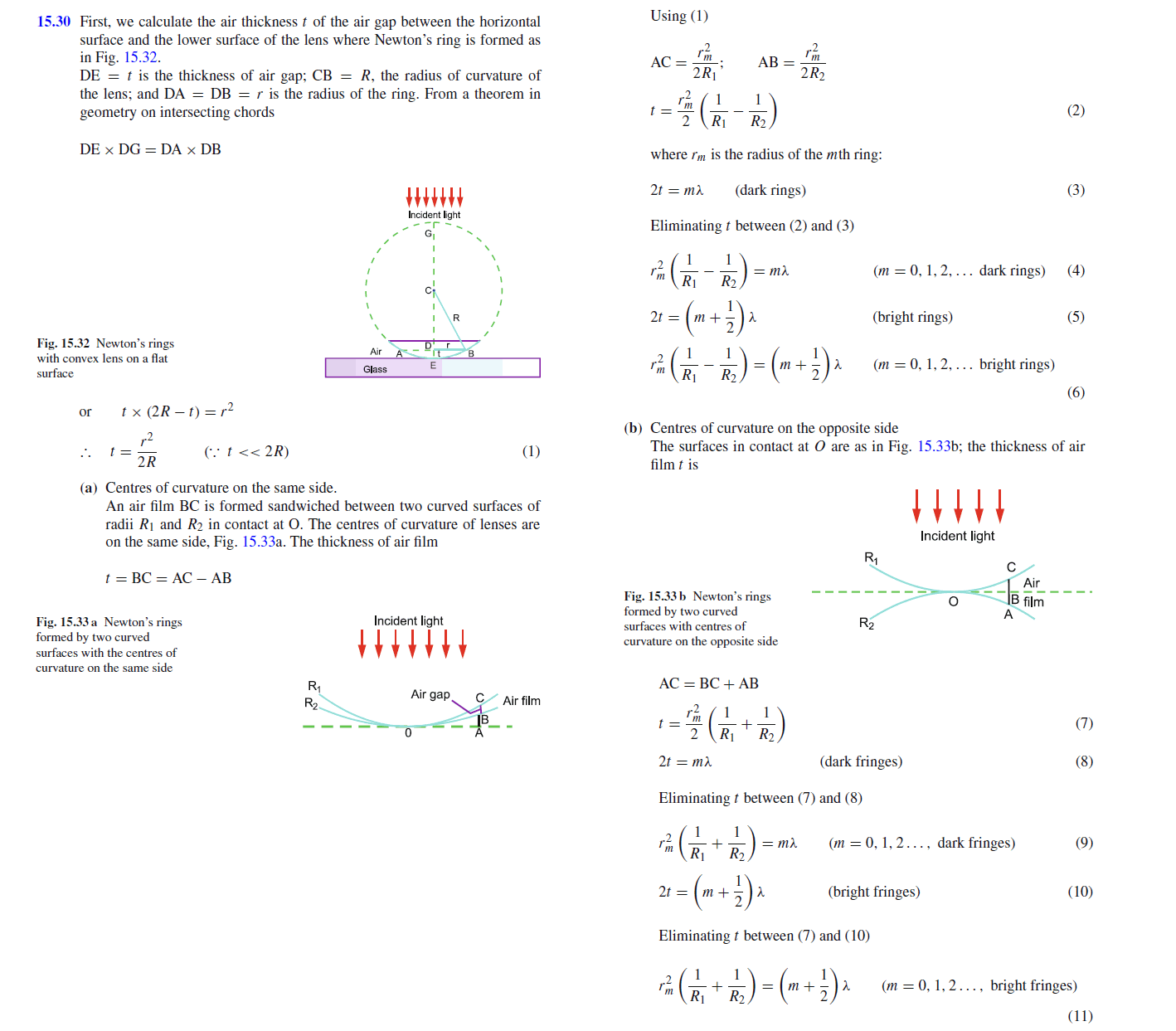
Newton's rings may be formed in the reflective light by two curved surfaces as in Fig. 15.12a,b with the monochromatic light of wavelength L incident from the top. Show that the radius of the nth ring is given by the expression for the two situations: r^2n(1/R1+1/R2)=nL (dark rings) = (n + 2)L (bright rings) Minus sign in the bracket of left side for situation (a) and plus sign for situation (b). |
| New search. (Also 5349 free access solutions) |